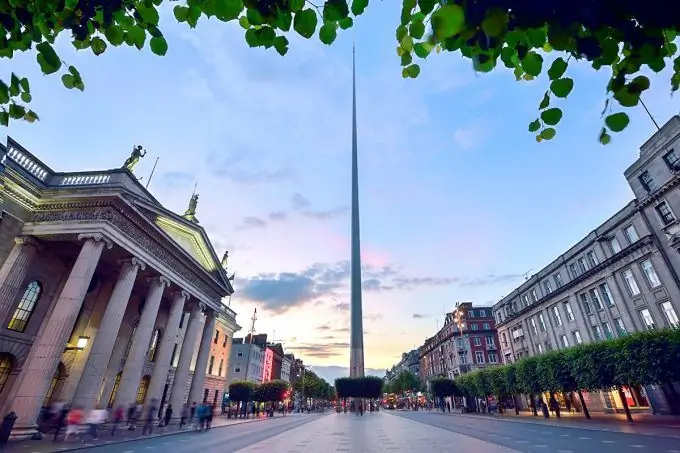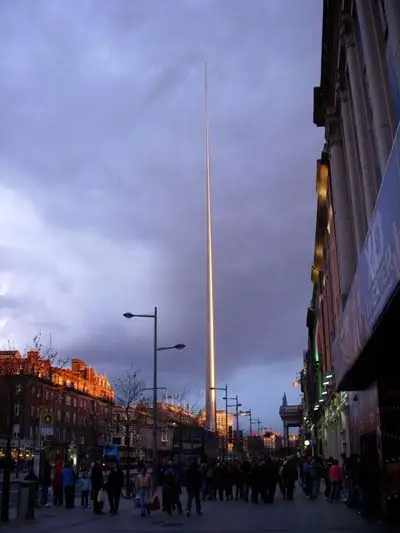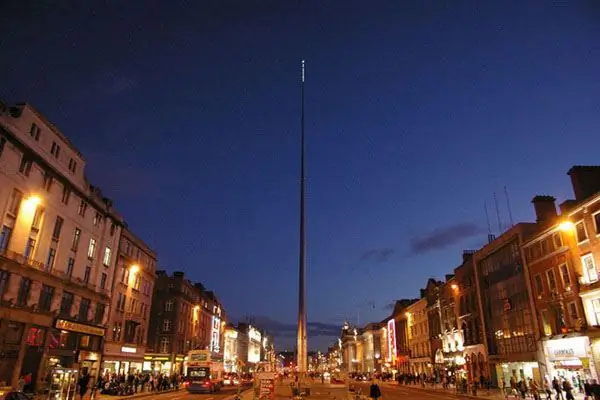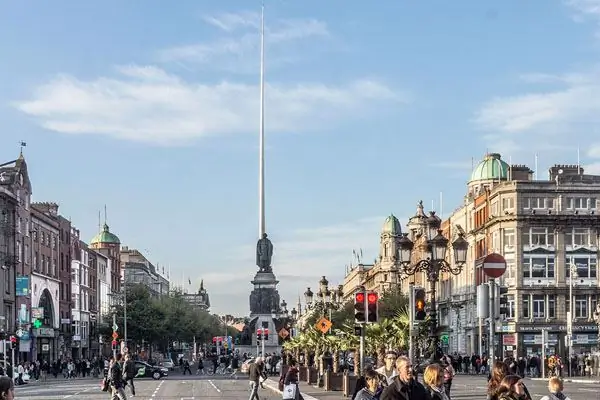- Author Antonio Harrison [email protected].
- Public 2023-12-16 07:44.
- Last modified 2025-01-22 21:44.
The symbols of the most famous historic centers began to change in the 21st century. Now it is not the city authorities who single out buildings according to the principle of interesting architecture or antiquity, but the tourists themselves publish photos of the objects they like on social networks. So it happened with the Dublin Needle.

If the angle is chosen successfully, then any object, including a modern structure, can become a symbol of the city. In 2003, an original novelty appeared in Dublin. She gained popularity immediately: a wonderful background for photographs.

New pearl
The shape of the monument is simple, an elongated cone. The height of the building is 121 meters. It is lined with reflective materials, and therefore sparkles in the sun. At dusk, the structure is practically invisible. But on its top, aviation lights light up at night.
At the base, the width reaches three meters, and at the top it narrows to fifteen centimeters. This was the reason for the comparison with the needle. This spectacular object has become a symbol of the capital of Ireland.
The creators named their creation the Monument of Light. He personifies the new millennium of the country, as well as the entrance to it of the whole world. The idea quickly found both fans and opponents, discussing the advantages and disadvantages of the design. However, the monument was unveiled, and during the solemn ceremony, the townspeople laid a capsule with an appeal to the descendants.

Creation history and installation location
The monument was erected on the site of the monument to Admiral Nelson, which suffered from the actions of militants in the last century. The site was empty from 1966 to 2003. The design that won the competition took the place of the destroyed structure. From now on, a giant steel needle pierces the sky over the country. The main purpose of its installation was to give the old center a more modern look.
The landmark adorns the city's main street, O'Connell Street. At the opposite end there is a monument to the national leader of the Irish, after whom the streets are named. There is a bridge over the River Liffey, O'Connell Bridge.
Buildings from the 19th and early 20th centuries have survived on the street. Tourists compare O'Connell Street to the Champs Elysees: both streets have a special historical charm. Here you can see the building of the former post office, built in 1818. There are many benches, shops, cafes and tourist buses for rest.

There are many interesting objects near the Monument of Light, significant not only for the capital, but also for the whole country.
The modern "face" of the capital
In terms of the number of disputes, the construction process went down in history. But it was the controversy that helped the sights not remain an ordinary pillar on the main street, but go down in history as a point of attraction for tourists who arrived in Ireland.
The monument is often referred to as the Dublin Spire. It is included in the program of many excursions around Dublin; guests and residents of the capital of Ireland are willingly photographed against the background of the structure.

Getting to one of the most visited places in the country is easy both by bus and tram. The Monument of Light has become one of the city's hallmarks. Without ultra-modern ergonomic design, the look of the modern Irish capital is impossible to imagine.






